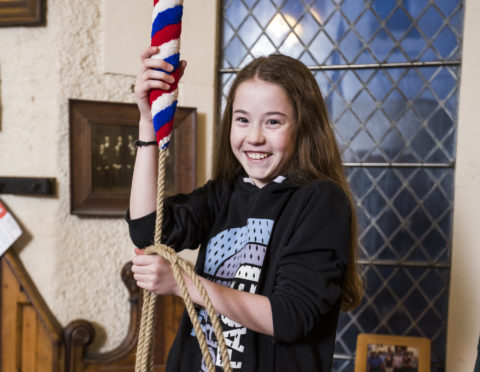
Many thought it was at the end of its rope but the ancient art of bell ringing is enjoying a new lease of life as more youngsters ring the changes.
A UK-wide recruitment drive has attracted more than 1,700 young recruits in the past two years as school kids and students are pulled in by the appeal.
Many are north of the border, with city groups in particular now in a really healthy state.
“Bell ringing is very much alive and thriving,” said Liz Evans, 33, of the Scottish Association of Change Ringers.
“And it’s booming in cities with universities as students see it as something a bit different and very sociable.
“It’s a mental challenge. Each piece of ringing lasts for five or 10 minutes and then you have a chat. And every session ends with either going for a coffee or going to the pub.”
Abertay University student administrator Liz, whose mum and dad met through bell ringing, practises in Dundee at St Paul’s Cathedral and at the Old Steeple.
It’s thought the current resurgence could be even greater if there were more places to ring. Scotland has just 20 towers with bells, with Edinburgh Cathedral the only 12-bell tower.
While bell ringing is simply swinging a bell to make a noise, change ringing involves multiple bells being rung melodically together in sequence. And Liz insists there’s no need to be super-fit and have bulging muscles to take part.
“The only physical requirements are that you can climb stairs and that you can lift your arms above your head,” said Liz, who started aged nine.
“The bells are hung on wheels with pulleys and, although you’ll feel it a bit when you’re learning, it’s not very physical.
“And it’s hugely satisfying to know you’ve achieved something as part of a team.
“We also have really fun competitions.”
The numbers taking part in the Ringing World National Youth Contest has more than doubled since 2011. There will be 24 teams and more than 250 campanologists at the competition in Liverpool this July.
“We’ve taken part as the Tartan Spartans in previous years but the logistics of getting everyone together to practice means we won’t have a team in 2019,” said Liz.
“But we will be looking to compete again.”
Twelve-year-old Dorothy Gay from Glasgow is one of the youngest recruits drawn to bell ringing.
Mum and dad Tina and Simon are both bell ringers, as is Simon’s dad, making her a third-generation ringer.
“I started hand ringing and then went along and had a go at pulling when I was nine,” said Dorothy, who practises with her parents at the city’s St Mary’s Cathedral.
“It was a bit hard at first but I’m a lot better now and it’s really good fun.”
And Tina says she’s seen the growing appeal among the younger generation.
“We’re seeing a lot more ringers from late teens to mid-20s than we did just five or six years ago,” said Tina.

Enjoy the convenience of having The Sunday Post delivered as a digital ePaper straight to your smartphone, tablet or computer.
Subscribe for only £5.49 a month and enjoy all the benefits of the printed paper as a digital replica.
Subscribe